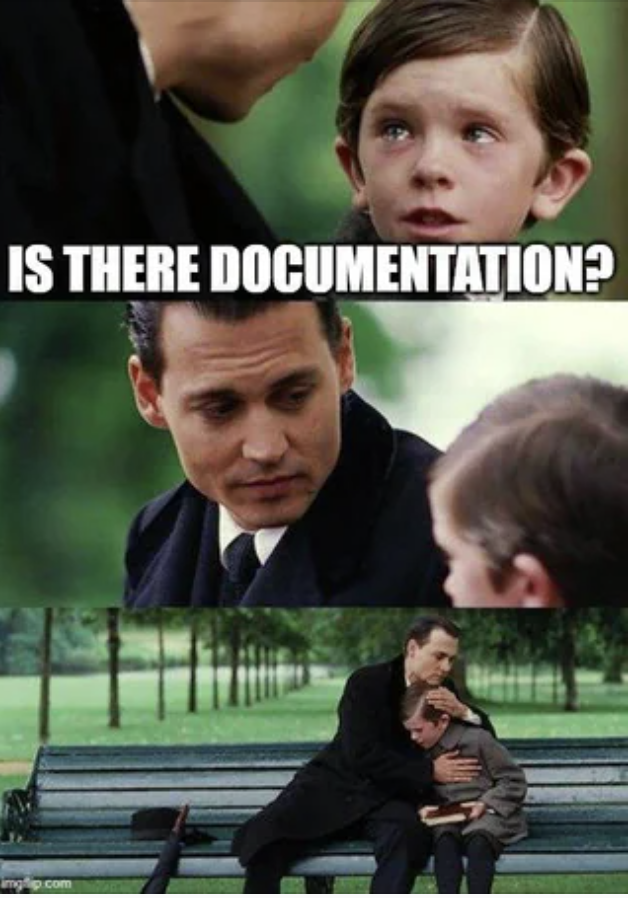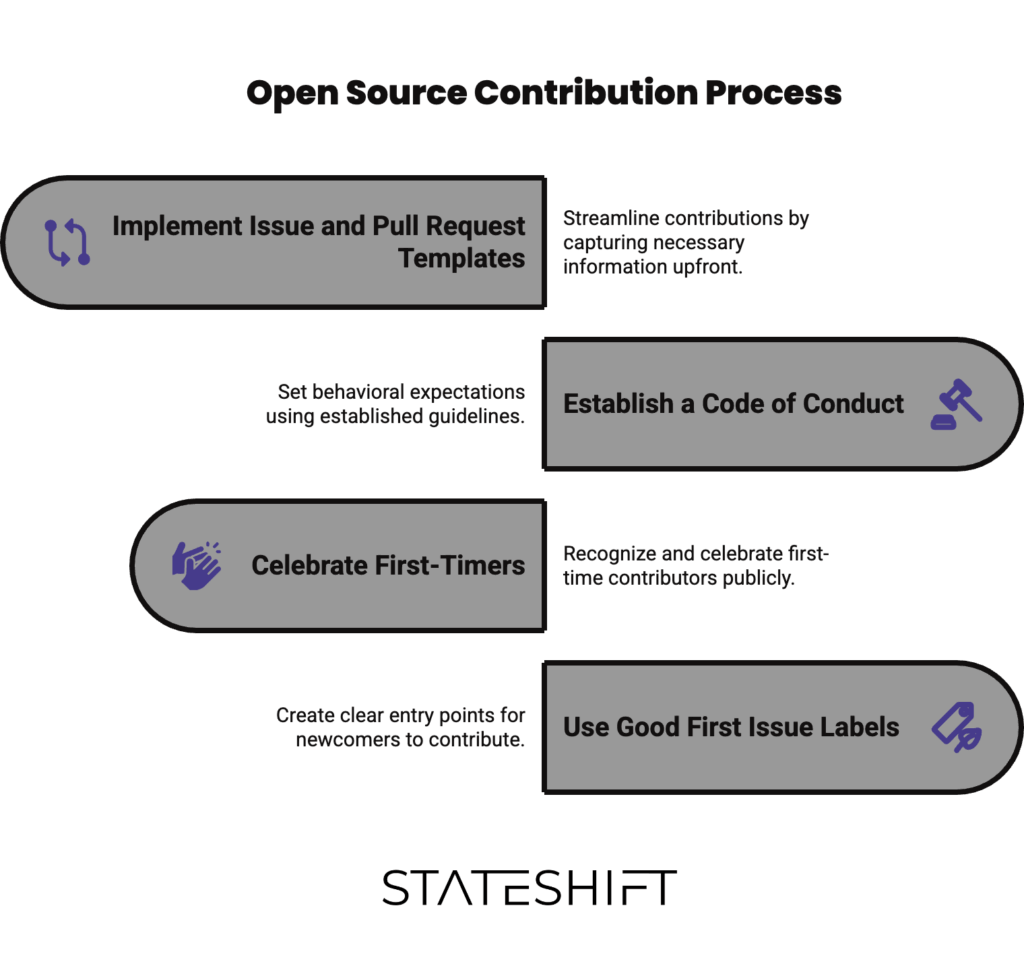Let’s start with an uncomfortable truth.
Your GitHub repository has clean code. Solid architecture. Impressive test coverage.
And nobody’s using it.
Most developers think great code sells itself. Push something technically excellent to GitHub, wait for stars and contributors to roll in.
That’s complete nonsense.
After working with hundreds of tech companies on their open source strategies, one pattern keeps showing up: the projects that thrive don’t always have the best code. They have the best technical documentation and the best systems around that code.
Here’s what actually matters.
The Real Reason Most GitHub Projects Die
Every week, thousands of repositories get abandoned despite having perfectly functional codebases.
The issue isn’t technical quality.
The problem is that most developers treat open source projects like solo coding exercises instead of ecosystem-building opportunities. They solve a problem, publish the solution, and wait.
Nothing happens.
For venture-backed companies, this pattern is expensive. Months of engineering time invested into open source initiatives that generate zero engagement because the team focused entirely on code and ignored everything else.
The market never saw it. The market couldn’t understand it. The market had no reason to care.
Five Things That Matter More Than Your Code
Through our work with developer-focused companies from Seed to Series C, we’ve identified five systems that separate thriving projects from dead ones.
These aren’t theories. They’re the operational playbooks that React, TensorFlow, and VS Code used to build massive communities.
1. Documentation That Doesn’t Suck
Your documentation isn’t supplementary. It’s your product interface.
When developers land on your repository, they’re not reading source code. They’re scanning your README to figure out what you built and whether it solves their problem.
Most projects fail this test in 30 seconds.
You get a wall of text, unclear setup instructions, and a developer who’s already moved on.
Here’s what works.
Your README needs to answer three questions in under 30 seconds:
- What does this do?
- Why should I care?
- How do I start using it right now?
Beyond the README, you need documentation for multiple skill levels. New users need step-by-step onboarding. Intermediate users need guides that go deeper. Expert users need comprehensive API references.
Most projects create onboarding docs and API references but ignore the middle entirely. Users complete the quickstart, then get stuck.
Use visual aids. Developers are visual creatures despite what the text-only documentation culture suggests. Diagrams, screenshots, workflow illustrations…they all reduce cognitive load.
Stripe gets this. Their docs include interactive examples you can test without leaving the page.
Write conversationally. Django’s documentation succeeds because it reads like a helpful colleague, not an academic paper. When we work with companies on documentation, engagement improves when teams shift from formal to conversational tones.
Every time.

2. A Predictable Release Schedule (So People Know You’re Not Dead)
GitHub is littered with projects where the last commit was during the Obama era.
This creates a trust problem for every project, including active ones.
When developers evaluate your tool, they’re asking: “Will these people maintain this, or abandon me in six months?”
A predictable release schedule answers that question.
It proves your project has sustained momentum and committed maintainers. The specific cadence doesn’t matter. Weekly, monthly, quarterly…pick something that works and stick to it.
Display your status right at the top of your README. A simple “actively maintained” badge takes two minutes but immediately addresses the “is this thing dead” question.
The Linux kernel has shipped regular releases like clockwork for decades. That consistency created trust back when everyone dismissed open source as a hobby.
Vue.js publishes detailed roadmaps showing which features are coming. This prevents the anxiety users feel when a project’s direction seems unclear.
Respond to issues and pull requests fast. Ideally within 48 hours. Even if you just say “I’ve seen this, will check it out later.”
Speed of response signals health more than almost anything else.
3. Stop Treating New Contributors Like They’re Interrupting
Many open source projects treat newcomers like they’re interrupting a private conversation between geniuses.
Ask a question, get told to read the manual. Or get silence.
This drives away potential contributors before they can add value.
The difference between thriving and dying projects isn’t code quality. It’s whether people actually want to be part of your community.
Rust’s community is famous for welcoming beginners despite being a technically complex language. Free Code Camp maintains a supportive environment at massive scale.
Build inclusive systems from day one.
Issue and pull request templates streamline contributions by capturing necessary information upfront. No back-and-forth requesting details. Templates show you respect contributors’ time.
A code of conduct sets behavioral expectations. Use the Ubuntu Code of Conduct or another established one under Creative Commons. Don’t write your own from scratch. That’s a massive time sink.
Celebrate first-timers. When someone makes their first contribution, recognize them publicly. Post about them on Discord, your blog, social media. Make a video. This moment matters to them. Make it feel special.
Good First Issue labels create clear entry points. Tag straightforward fixes like docs typos or missing tests. These let newcomers merge code without deep system knowledge.

4. Clear Vision (Not Just “Scratching an Itch”)
Most projects begin with enthusiasm but no purpose beyond solving the creator’s immediate problem.
Without vision and direction, projects drift into feature bloat or stagnate as contributors pull in different directions.
Put together a project charter. Your mission, core values, key milestones, and how people can get started. It doesn’t need to be long. But it needs to exist and be visible.
Define your design philosophy. This goes beyond visual design. It’s your architectural principles and decision-making framework.
PostgreSQL has a clear philosophy around reliability. React’s “learn once, write anywhere” guided countless technical decisions. These aren’t marketing slogans. They’re tools that help maintainers say yes or no to features.
Write contribution guidelines that are actually useful. How to build the project. Coding standards. Submission process. Testing requirements.
Keep them simple. Most contribution docs are only quick if you already know the tool.
Share regular roadmap updates. As you ship releases, communicate what shipped and what’s coming next. The roadmap connects vision to tangible progress.
5. Content Marketing (Yes, You Need to Market)
Great documentation, predictable releases, welcoming culture, and clear vision are worthless if nobody knows your project exists.
Most developers believe great code markets itself.
It doesn’t.
With millions of repositories on GitHub, visibility requires deliberate strategy.
You need to become a content marketer.
Yes, that phrase makes developers uncomfortable. But marketing just means connecting value with people who need it.
Create regular content. Post on social media. Write blog posts. Make videos. Go on podcasts. Each channel reaches different audiences.
Video is particularly powerful. Developers see your tool in action and get excited about possibilities.
Pick one channel and commit to consistency. For most developer projects: X and LinkedIn. Share releases and updates immediately. Post as often as you can manage.
Fifteen minutes daily beats occasional bursts.
Meet people where they are. Find subreddits, forums, YouTube videos, LinkedIn groups where potential users hang out. Participate genuinely. Be helpful rather than promotional.
Another fifteen minutes daily in relevant communities compounds over time.
Work with adjacent projects. If you’re building a kernel module, connect with Ubuntu, Debian, Raspberry Pi. If you’re creating a JavaScript framework, engage the broader JS ecosystem.
Cross-project collaboration expands reach and creates valuable integrations.
What Makes This Different From Standard Open Source Advice
Most guidance focuses on governance models, licensing decisions, and contribution mechanics.
Those matter. But they’re secondary.
Projects fail long before governance becomes relevant because they never achieved the initial traction to make governance necessary.
This framework prioritizes ecosystem building over isolated development. It recognizes that successful open source projects are movements, not just codebases.
Through our work with 240+ tech companies, we’ve seen this repeatedly. The projects that scale aren’t always the most technically sophisticated.
They’re the ones that made developers feel welcome, showed consistent progress, communicated clear direction, and actively worked to be discovered.
Getting Started: This Week
You don’t need to implement everything at once.
Start with high-impact improvements you can finish this week.
Audit your README. Can someone understand what you built, why it matters, and how to use it in 30 seconds? If not, rewrite it. Remove everything that doesn’t serve those three goals.
Add project status and release schedule. Even if you only commit to quarterly releases, stating it builds more trust than leaving people guessing.
Review your last ten issues and PRs. How long before you responded? Set up notifications so you can acknowledge submissions within 48 hours.
Write a brief charter if you don’t have one. Single page. Vision, values, a few milestones. You can refine it later.
Pick one content channel. X? Commit to three posts weekly. Blogging? One technical post monthly. Start small but start consistently.
Why This Matters for Venture-Backed Companies
For tech companies building developer tools, successful open source creates powerful go-to-market advantages.
Developer adoption. Technical credibility. Community-driven distribution that paid marketing can’t replicate.
But most companies approach open source tactically. They release a tool hoping it gains traction without building the systems that actually create traction.
This wastes engineering resources and misses the ecosystem opportunity.
At Stateshift, we help companies build these systems deliberately. Through Pathfinder, we work with teams from discovery through execution, building the frameworks that turn open source projects into growth engines.
Documentation strategy. Community design. Content systems. Measurement frameworks that connect open source activity to business outcomes.
Companies that treat open source as ecosystem engineering consistently see better developer adoption, stronger advocacy, and more durable competitive positioning.
They’ve moved beyond “build it and they will come.”
The Most Counterintuitive Truth
Here’s what developers don’t want to hear:
Code quality is the least important factor in open source success.
Not unimportant. Just less important than technical documentation, community, vision, consistency, and distribution.
This contradicts everything developers are taught. We obsess over elegant code, test coverage, architectural purity.
Those things matter for maintainability. But they don’t predict adoption.
Projects that reach massive scale often have decent but not exceptional code. What they have instead is exceptional clarity, welcoming communities, consistent momentum, and deliberate visibility.
They optimized for human adoption rather than technical perfection.
Once you have adoption, you can improve code quality with community help. Without adoption, perfect code is just a personal achievement.
FAQ
How long should my README be?
Long enough to communicate what your project does, why it matters, and how to start in under 30 seconds of scanning. Typically 200-400 words for core content, followed by installation, examples, and contribution guidelines. Make critical information immediately scannable rather than buried.
What makes documentation more important than code quality?
Documentation determines whether developers can evaluate and adopt your project. Code quality matters for long-term maintenance. Most projects fail at adoption because developers can’t understand what the project does. Excellent code nobody understands creates zero value. Clear docs with decent code creates immediate value and attracts contributors who improve code over time.
How often should I release updates?
Consistency matters more than frequency. Every two weeks, monthly, quarterly…establish a predictable pattern and communicate it clearly. Predictability proves active engagement and sustained momentum more than irregular releases, even frequent ones.
How do I handle hostile community members?
Implement a clear code of conduct from the start. Enforce it consistently. Address violations privately first with clear explanation. For repeated violations, enforce consequences up to banning if necessary. The goal isn’t policing every interaction but making clear that hostile behavior won’t be tolerated.
Should I focus on GitHub stars as a metric?
No. Stars measure awareness, not engagement or adoption. More valuable metrics: active contributors, issue resolution time, documentation views, integrations, and for commercial products, conversion from community to paying customers. Stars indicate visibility but tell you nothing about whether your project helps developers or drives business outcomes.
What’s the fastest way to get initial contributors?
Personally invite 5-10 trusted developers to a private alpha group. Give them early access, ask for feedback, involve them in direction. These early collaborators become advocates and set cultural tone. Create good first issues for newcomers. Celebrate every first contribution publicly.
Building an open source project? We’d love to talk to you more about what you’re building. Book a call here.
Watch: The Complete GitHub Project Strategy
This post focused on technical documentation, but that’s just one of five critical systems. Watch Jono break down what actually makes GitHub projects succeed – including the mistakes most teams make with documentation, releases, community, and distribution.



